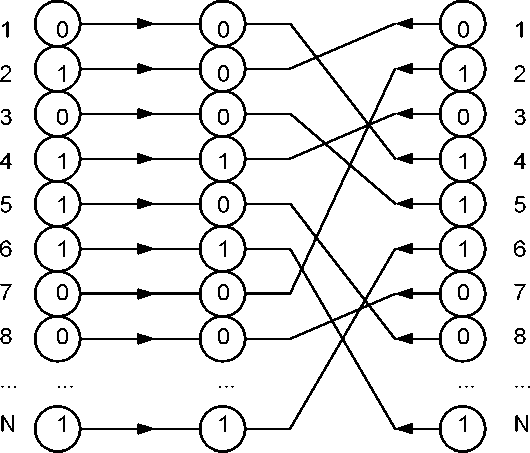Context-Dependent Thinning 29
.# fin1 fout fin2 #

θ=1.5
Figure 3.
The input codevector z = x1 ∨ x2 ∨ ... ∨ xS (A)
The output (thinned) codevector is {z}
Calculate K=ln(1-1/S)/ln(1-pS)
Set auxiliary vector w to 0
Seed the random-number generator: randomize(seed).
for (k=1, 2,..., K)
if ((r=rand()) ≠ 0)
for (i=1, 2,..., N)
wi = wi ∨ zi+r modulo N
for (i=1, 2,..., N)
<z)i = Zi ∧ Wi
|
The input codevector z = x1 ∨ x2 ∨ ... ∨ xS |
(B) |
Seed the random-number generator: randomize(seed).
while(∣(z)∣ < M)
if ((r=rand()) ≠ 0)
for (i=1, 2,..., N)
(z)i = (z)i ∨ (zi ∧ zi+r modulo N)
Figure 4. (A), (B).
More intriguing information
1. Comparison of Optimal Control Solutions in a Labor Market Model2. The name is absent
3. The Effects of Attendance on Academic Performance: Panel Data Evidence for Introductory Microeconomics
4. Restructuring of industrial economies in countries in transition: Experience of Ukraine
5. The name is absent
6. Individual tradable permit market and traffic congestion: An experimental study
7. The name is absent
8. Firm Creation, Firm Evolution and Clusters in Chile’s Dynamic Wine Sector: Evidence from the Colchagua and Casablanca Regions
9. The name is absent
10. The name is absent